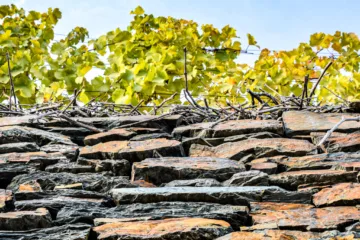Understanding the role of Schist soils in Viticulture
Schist is a large group of coarsely crystalline metamorphic rocks (flaky appearance) that can be split into thin layers because their micaceous minerals have become aligned. These soils have the particularity of being able to store heat during the day and release it at night, which influences the maturity of the grapes and the growth of the vine. In addition, their friability allows the roots of the vine to be able to draw nutrients deep in the soil…
